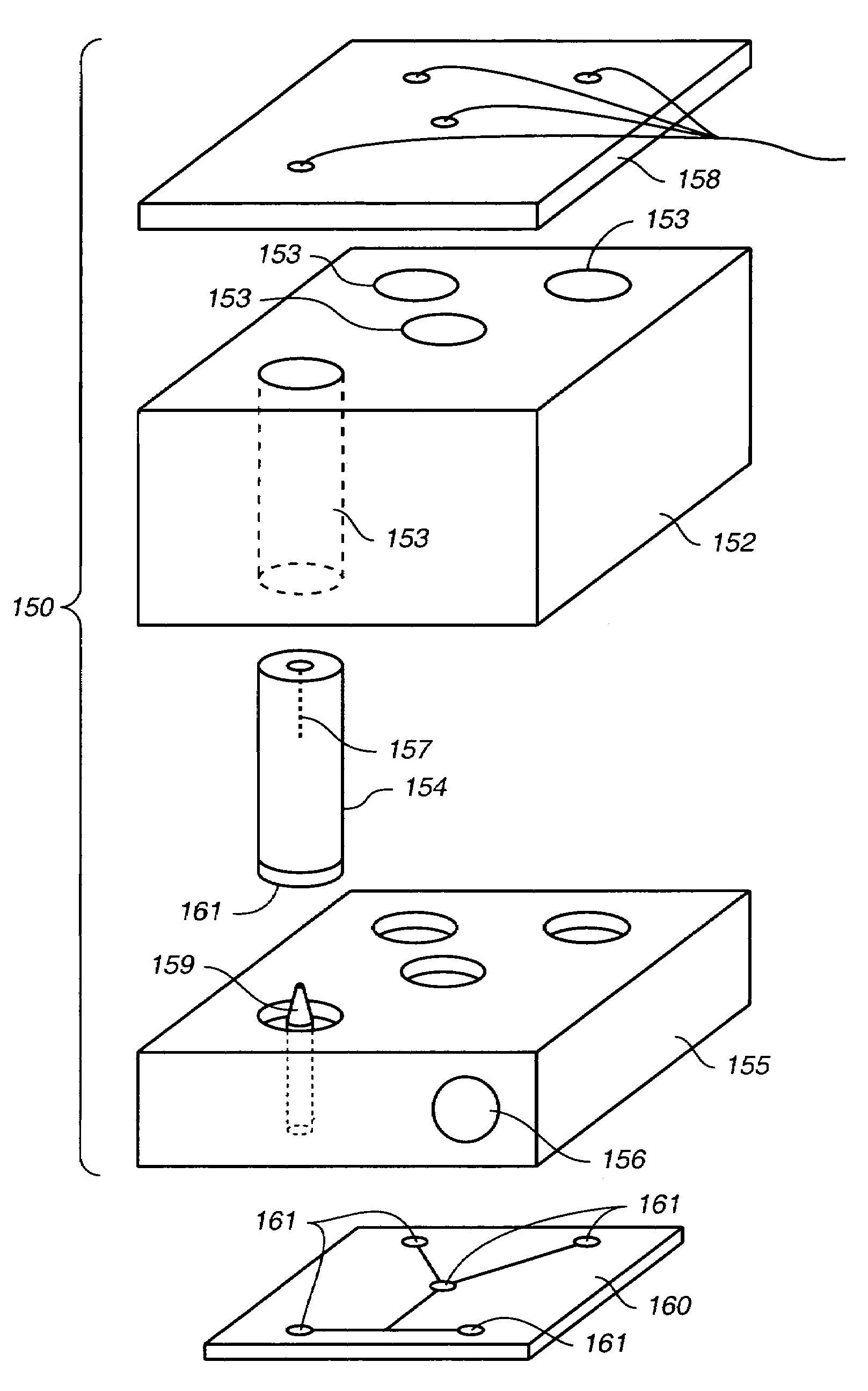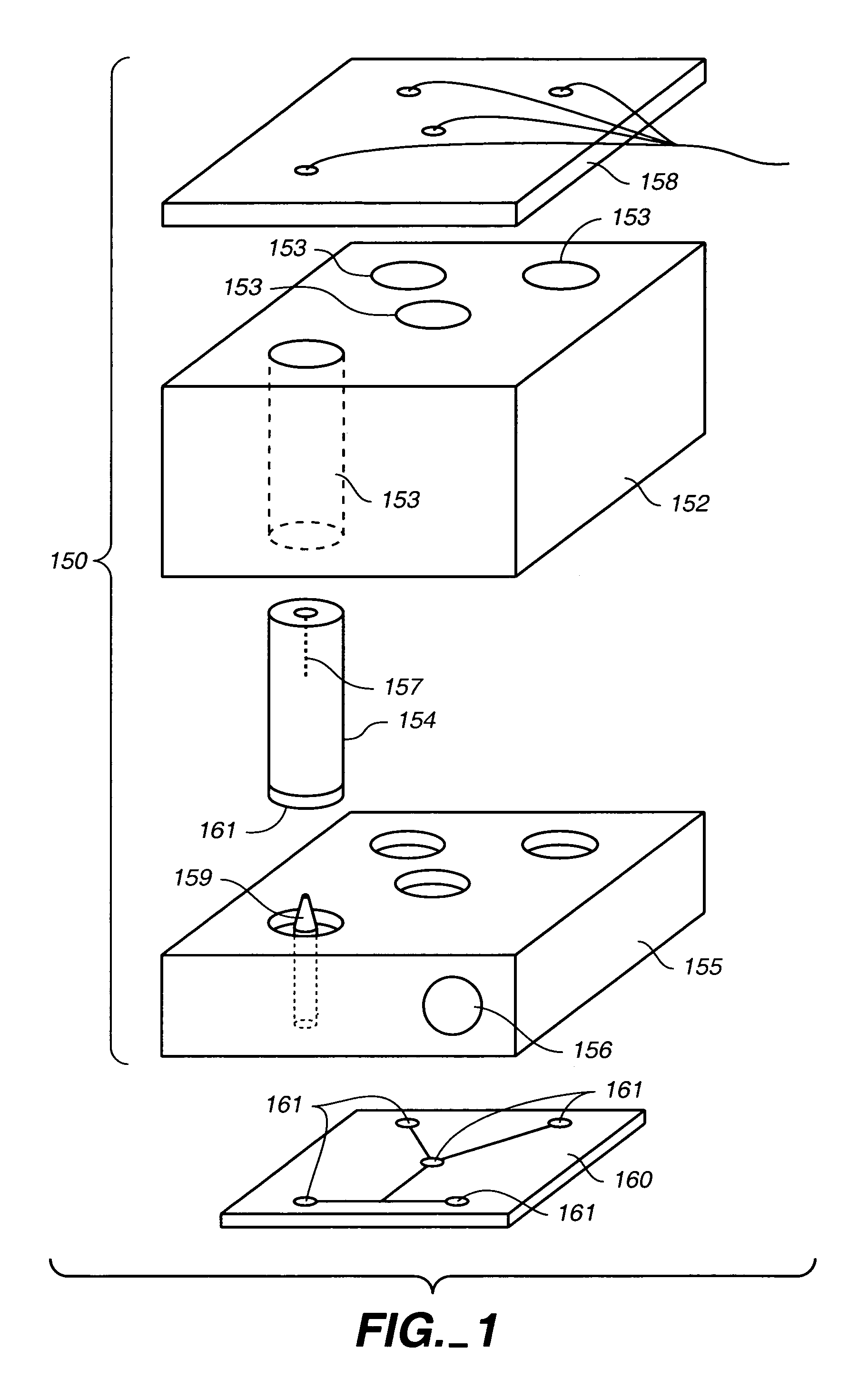Portable apparatus for separating sample and detecting target analytes
- Summary
- Abstract
- Description
- Claims
- Application Information
AI Technical Summary
Benefits of technology
Problems solved by technology
Method used
Image
Examples
example 1
Microfluidic Chip Fabrication
[0116]The microchip was fabricated from Corning 7980 fused silica wafers (100 mm diameter, 0.75 mm thickness using standard photolithography, wet etch, and bonding techniques. Fused Silica wafers were PECVD deposited with amorphous silicon (150 nm), which served as the hard mask. A 7.5-micron thick layer of positive photoresist was spin-coated and soft-baked (90 C, 5 minutes). The mask pattern was transferred to the photoresist by exposing it to UV light in a contact mask aligner. After exposure, the photoresist was developed and hard-baked (125 C, 30 minutes). Exposed silicon was etched in a plasma etch tool. Silicon etch process consisted of a 30 second oxygen ash @ 200 W DC & 25 mTorr, followed by 150 second SF6 @ 200 W DC & 50 mTorr. The subsequently exposed glass was etched with a 49% HF solution. Via access holes were drilled in the cover plate (Corning 7980) with diamond-tipped drill bits. The etched wafers and drilled cover plates were cleaned wi...
example 2
A portable, modular analysis device
[0117]FIG. 4 shows an exploded view of an embodiment of the device, indicated generally at 10. Externally, the device is comprised of a top (or cover) plate 11, a case or shell 12, and a back cover 13—together, a housing. In the embodiment illustrated here, top plate 11 incorporates a 4-button menu-driven interface 14 and lighted LCD screen 15 for programming separation conditions and for presenting analytical results, a serial port computer connection 16 and 6-volt electrical connection 18 for use when wall power is available.
[0118]FIG. 5 is a view of the underside of cover plate 11 showing the general arrangement of an embodiment of a power module on a high voltage board carrier 21. The power module comprises a plurality of high voltage boards 22 that provide the electric field required to drive the chemical separations and manipulate fluid samples for such operations as sample loading in each microchannel. In this embodiment, the high voltage bo...
PUM
| Property | Measurement | Unit |
|---|---|---|
| Flow rate | aaaaa | aaaaa |
| Length | aaaaa | aaaaa |
| Current | aaaaa | aaaaa |
Abstract
Description
Claims
Application Information
 Login to View More
Login to View More - R&D
- Intellectual Property
- Life Sciences
- Materials
- Tech Scout
- Unparalleled Data Quality
- Higher Quality Content
- 60% Fewer Hallucinations
Browse by: Latest US Patents, China's latest patents, Technical Efficacy Thesaurus, Application Domain, Technology Topic, Popular Technical Reports.
© 2025 PatSnap. All rights reserved.Legal|Privacy policy|Modern Slavery Act Transparency Statement|Sitemap|About US| Contact US: help@patsnap.com



